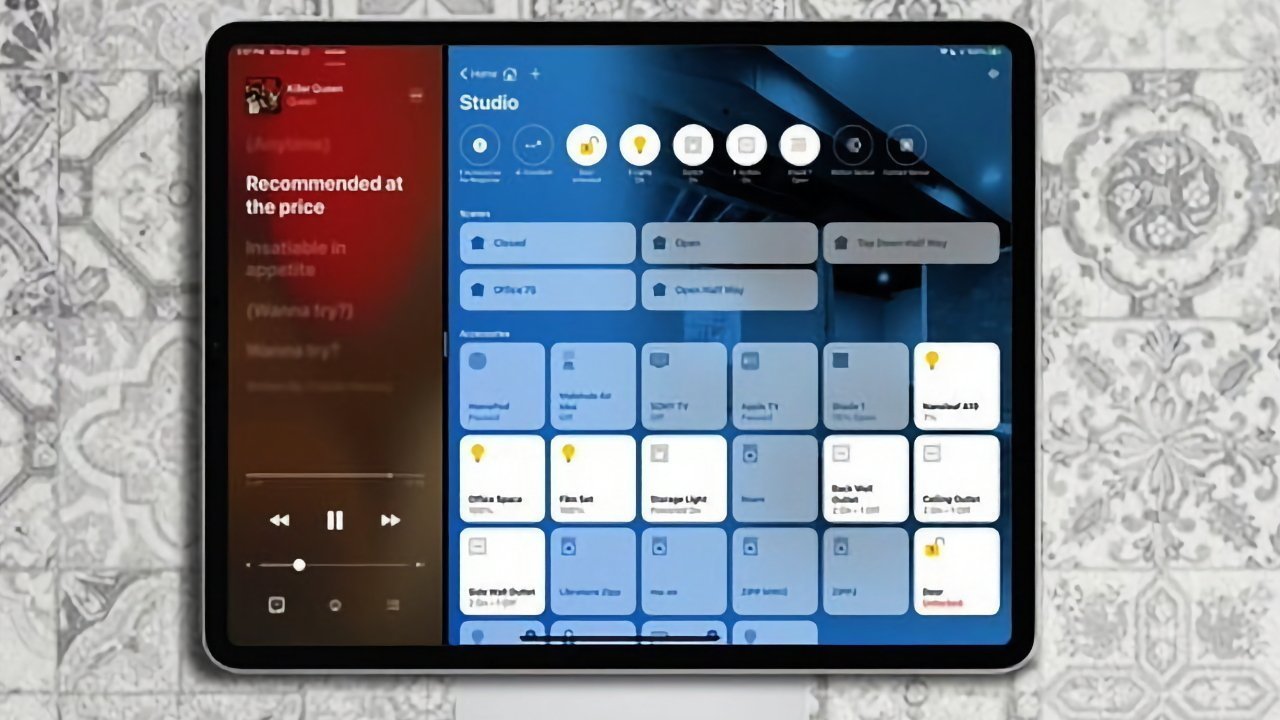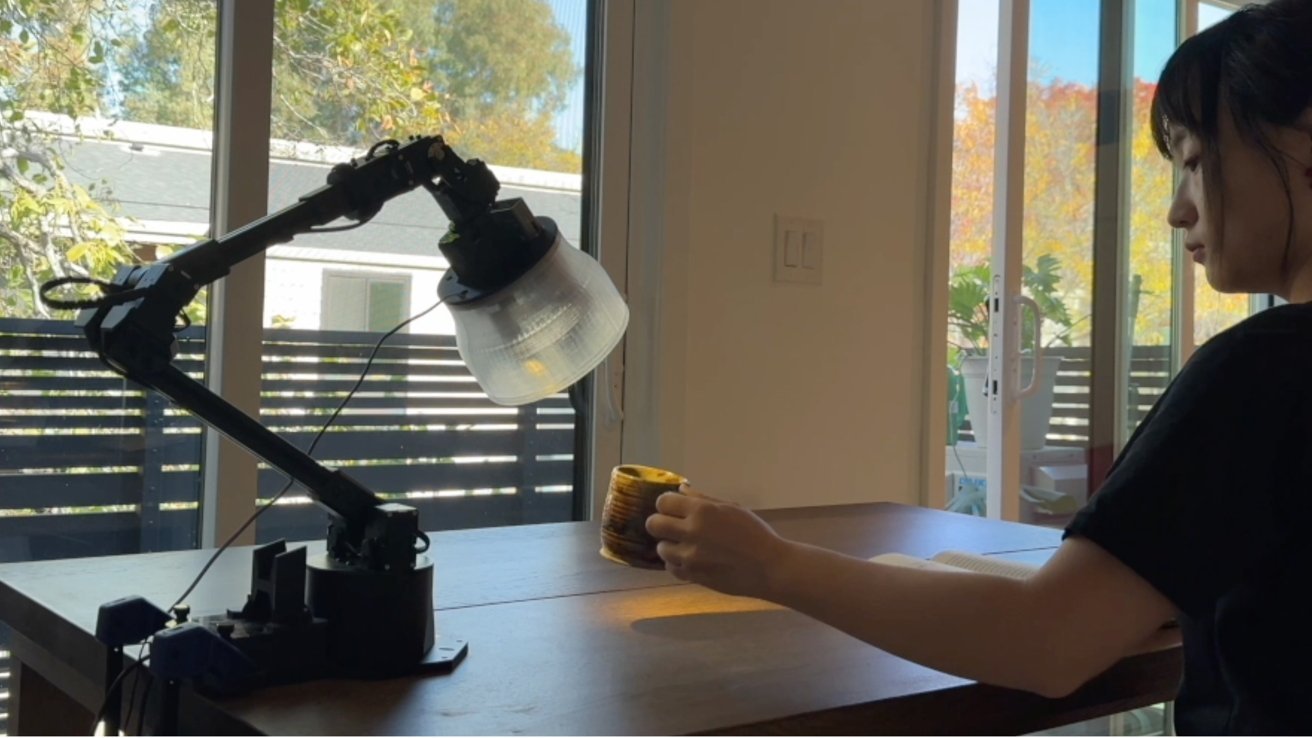Apple's rumored Home Hub said to be under employee testing
Apple's long-rumored Home Hub peripheral is now rumored to be debuting in the second half of 2025, and is allegedly being taken home by select Apple employees for real-world testing.

One concept for a future Apple Smart Home Hub.
Various rumors have suggested that Apple will be making a big push into smart home accessories across the second half of 2025, including the existing Home Key feature for a future smart doorbell. Apple is also working with other manufacturers of smart home accessories to ensure HomeKit compatibility.
A new report from Bloomberg reiterates earlier claims that Apple intends to tie the rise of HomeKit accessories into a smart Home Hub, now with a device code name: J490.
The long-rumored accessory is now likely to wait for its debut until the June WWDC developer conference or later to be officially announced. This may coincide with the existing tvOS changing to become the basis of a future homeOS.
In part, this could be due to the recently-announced delay in Siri development -- now expected to be a bigger part of iOS and iPadOS 19 along with the next version of macOS, rather than later in the iOS 18 cycle as previously expected.
Testing on the product continues, however. The new report claims that Apple has begun internal testing on the device, including letting select employees take it home and provide feedback.
Apple Home Hub predictions
Analyst Ming-Chi Kuo has previously claimed that the product will enter mass production in the second half of 2025, likely aiming for a holiday-season debut. The Home Hub is thought to include a camera for FaceTime calls, as well as a high-quality speaker.
To complement the device, Apple may release its own line of indoor security cameras, or partner with existing makers to ensure HomeKit compatibility with more smart home accessories. Ikea, for example, recently filed for FCC clearance on its first Matter-over-Thread supporting temperature and humidity sensor, which would work with its compatible Dirigera hub.

A potential future Apple home robot. Image credit: Apple Machine Learning Research
Currently, there are thought to be two versions of the unannounced Apple Home Hub. This includes the iPad-like device that could be wall-mounted or act as a HomePod audio device with display, and a future Luxo-like robotic arm meant as a tabletop device that could "follow" a user's movements during a video call, similar to the CenterStage feature.
These future hardware products would tie in deeply with family members' personal Apple devices, offering coordination between Contacts, Calendar, Reminders and other apps. According to rumors, Apple's intent is to offer the mountable Home Hub as a lower-cost device, with a later robotic assistant as a more expensive and advanced option.
Rumor Score: Possible
Read on AppleInsider

Comments
The most plausible Home Hub hardware device would be some sort of dual- or multi-function MagSafe-equipped smart charging stand that would be controlled by a software interface primarily from their phones.
A device with HomePod-like features would be okay but again but voice control only works within normal speaking distance.
One thing for sure that this Home Hub device would have to conquer would be effortless device configuration. It needs to "just work" rather going through complicated, unreliable, convoluted pairing procedures. That's like 95% software.
Also devices like iPhones and Apple Watches can indicate where the person is (living room, den, bedroom, garage, laundry room, etc.) and possibly adjust connected devices appropriately. If I need to walk up to a touchpanel to dim the lights upon leaving a room, hell, it's easier to just hit a physical light switch.
We've seen consumers push back on full touchscreen interfaces in automobiles and a return of certain physical controls (like cabin climate control). It's way easier to just turn on/off the bedside lamp by hitting a switch rather than hunt around some screen for the button that turns off that light or use voice commands which might disturb other occupants.
And speaking of software it's clear that a Home Hub device will work better if it interfaces with a Siri implementation that isn't as dumb as a rock. That means that Apple really needs to release a context-aware version of Siri with Apple Intelligence with meaningful accuracy and reliability before they will have anything really useful in a Home Hub.
Releasing any sort of Home Hub device with Siri's current capabilities will not help adoption. This is one of those types of new devices that I will not be an early adopter of. I will probably wait 5+ years before thinking about having some sort of smart home hub. I'm sure Apple has prototype hardware in its labs. It's the software that is key.
Based on what I've seen in Apple Intelligence in March 2025, I think we are still 3+ years away from having an Apple Intelligence that will make the smart home viable.
I don't particularly feel the need for another device, especially now that iPad is so "cheap" I can use it as a spare tablet at home for most of the uses that seem to be integrated in the new device.
For me, if it was like an iPad, with iPad functionality off the dock and locked behind FaceID, but one which snaps to guided access when docked, with Home/scenes on side one side of the screen and Music on the other (even more so if that Music app could be third party), and a proximity sensor so that when nobody is close it shows my photos or memories, then I'd buy it in a heartbeat.
Having a central control panel is standard but by no means the only option.
Any authorised account/device should be able to interact with the (smart) home.
Anything with input capability (voice, gesture, touch...) should seamlessly and instantly have its credentials validated and be part of the control system.
In some cases, devices might need distributed authentication to be able to carry out certain tasks.
Then there is the sensor side which will feed data back to the system. mmWave fall detection, breathing detection, object detection/distinction, heat, smoke, air quality etc.
To glue it all together on the communication side there are FTTR and mesh solutions tied together by software.
Of course, things like domestic robots (from vacuum cleaners to potentially humanoid robots) will require secure IoT chipsets and other security elements.
If all these pieces can be laid out and work seamlessly together over robust connections then it's a potentially huge revenue stream.
If they can convince housing developers to build the system into new projects, even better.
All of the above is already being rolled out by competitors so it won't be easy by any stretch but like I said, if you go 'all in' it could be worth it.
A key barrier to fully implementing HomeKit (or its competition) is that none of it has quite reached the it just works stage. The tech nerds in the family have been willing to put up with some inconvenience in the implementation of the conveniences offered by the panoply of connected home devices, but the rest of the family can still get fairly frustrated by it. These things all need to work reliably, seamlessly and conveniently. Making it affordable to have both verbal and visual home controls distributed around the house is key to moving those other family members from begrudging participants to people who wonder how the world worked without smart home controls. When that happens, Siri and Apple Home will become yet another retroactive instant success.
Plug and Play for digital lifestyles.
Systems must absolutely be 'self-healing' on the software side and shouldnt be thrown off by power outages causing corrupt files or whatever.
AI for configuration and troubleshooting can work well here.
Another vital area is device support. No one wants to fill a home with smart gear and have a manufacturer do a SONOS and drop support of perfectly good equipment just because it doesn't play well with a newer system.
In this case, maximum attention needs to be paid to chipset security and standards in IoT and then to the security support for the lifetime of the device.